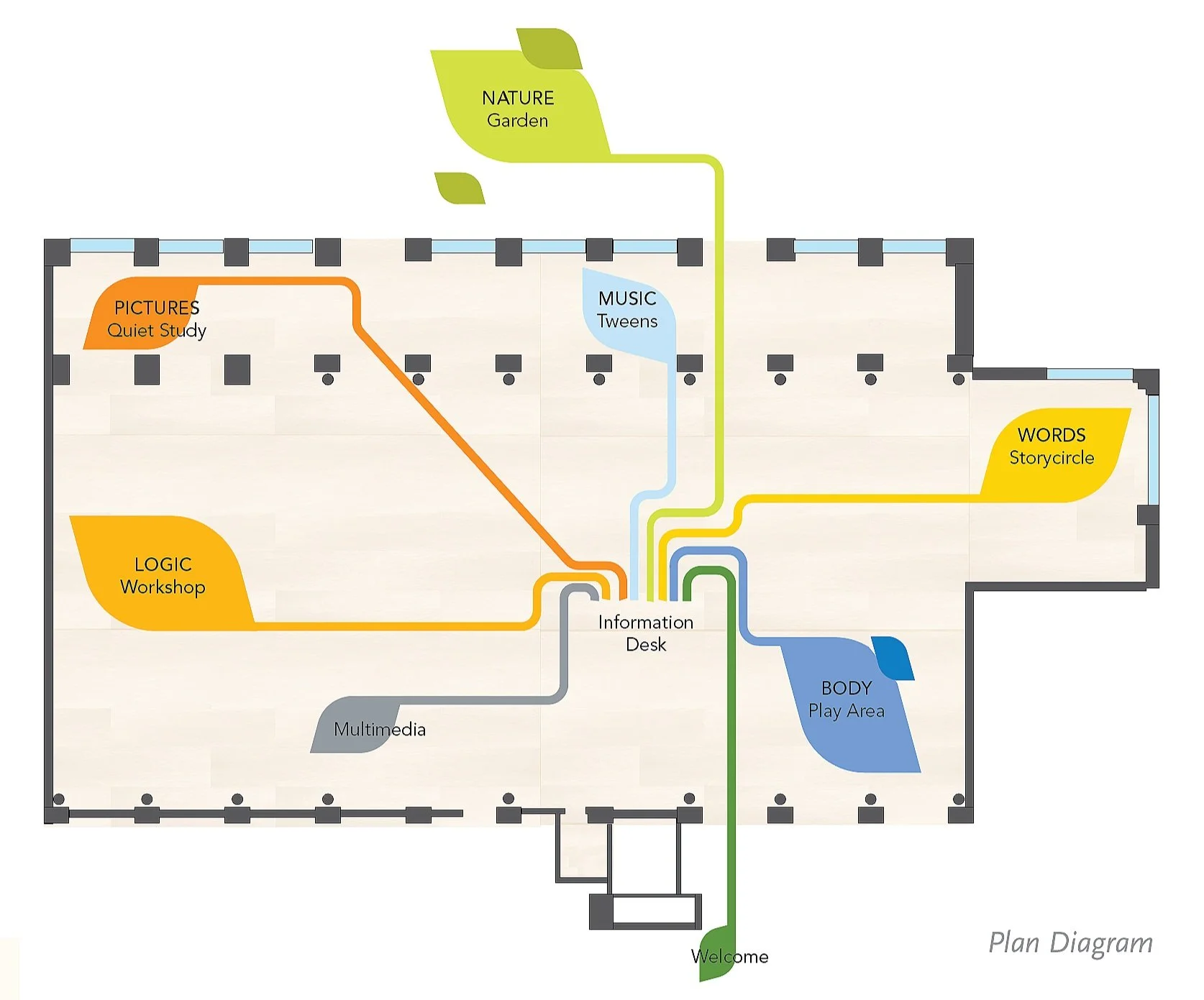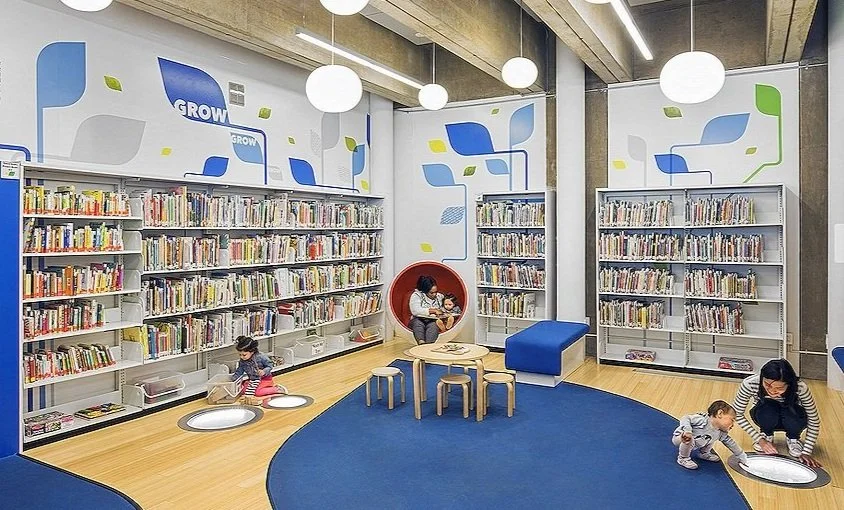Jackie and Harold Spielman Children’s Library
Port Washington Public Library, Port Washington, NY
2018

Library Overview and Information Desk The whimsical root, branch and leaf motifs of design's central "Tree of Knowledge" serve as color-coded wayfinding paths to the various areas of the library.
Project Description
The renovation of the 15,000-sf Jackie and Harold Spielman Children’s Library at the Port Washington Public Library serves children from infants to ‘tweens in an informal learning environment where young people can learn, grow and thrive through self-guided exploration and discovery. An interpretive framework based on the "Tree of Knowledge" was both the organizational basis for the thematic areas and inspiration for the central design motif that delights children and encourages learning.
Senior Interpretive Services Manager
Developed the interpretive strategy based on principles from Howard Gardner’s “Theory of Multiple Intelligences,” which identifies different learning styles, and Jean Piaget's “Developmental Stages of Children,” which defines three distinct phases of development in children from birth to age 11. This approach informed the overall design and the development of age-appropriate activations in each of the thematic areas. Conceptualized and developed activities informed by these principles that incorporate locally relevant content.
With SKOLNICK Architecture+Design Partnership
Thematic Plan Diagram A distinct “Learning Style” was designated for each area whose content and activities encourage children to use and develop that intelligence to explore related subject matter – Bodily/Kinesthetic (Toddler Area); Verbal/Linguistic (Storytelling Circle); Naturalistic (Garden); Musical/Rhythmic (Tweens area); Visual/Spatial (Quite Study); and Logical/Mathematical (Workshop).
Image: SKOLNICK Architecture+Design Partnership
Infant Activities In the “Sensorimotor Stage” (birth to two years) Infants learn about their world through their movements and sensations. Informed by Howard Gardner’s “Bodily/Kinesthetic Intelligence,” a set of floor-embedded “Discovery Portals” were developed to support the development of motor skills. Three viewports invite children discover local insects and invertebrates that live under (or on the) ground. By pushing an adjacent button, kids turn on a light in the viewport. Using handheld magnifying glasses, they can take a closer look at the creatures.
Toddler Activities Piaget defines the “Preoperational Stage” (two to seven years) as the phase during which children begin to think symbolically and learn to use words and pictures to represent objects. A large, illustrated map of Port Washington at toddler height features a number of local landmarks depicted in a fun, playful style. Large, easy-to-grasp magnets represent personal locations and figures – “Me,” “My Friend,” “My House,” “My School” – that the children can move around the map as they make up stories about life in Port Washington


